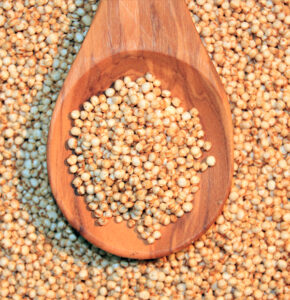Winter in Canada—Ugh. For some of us, there is no escaping the “winter blues.” As the cold season closes in on us, we feel gloomy, lethargic, and experience a lack of joy.
Until recently, the winter blues were thought to be all in the mind and best ignored. We now understand that this condition, what we call Seasonal Affective Disorder (SAD), is genuine and not to be dismissed.
SAD was first systematically reported and named in the early 1980s by Norman E. Rosenthal, M.D., and his associates at the National Institute of Mental Health in the United States. Dr Rosenthal was initially motivated by his desire to figure out the cause of his own experience of depression during the dark days of winter.
He discovered that the leading cause of SAD is lack of sunlight which can bring about dips in serotonin, a neurotransmitter that regulates mood. A lack of serotonin (often referred to as the happiness hormone) can cause anxiety, depression and sleep disorders. Lack of sunlight can also create a disruption in our circadian rhythms which affects sleep.
The symptoms of Seasonal Affective Disorder identified by Dr Rosenthal and his team include:
If you experience one or more of those symptoms and think you might be suffering from SAD, the good news is there are a variety of solutions. In his book, The Winter Blues, Dr Rosenthal recommends several treatments options, including:
Light Therapy: This is the most common treatment for SAD and one that Dr Rosenthal pioneered. Light Therapy involves introducing more light into the work or home environment. It is in widespread use in hospitals and clinics as an accepted treatment for Seasonal Affective Disorder. It can also be done at home with the purchase of a lightbox.
Another form of Light Therapy is Maharishi Light Therapy with Gems (MLG). MLG exposes specific areas of the body to light that has been passed through high-quality gemstones such as diamonds, emeralds, rubies and sapphires. The unique crystalline molecular structure, characteristic colour, and emitted light of each gemstone produce specific balancing effects for the mind, body, and emotions. (For more information on MLG visit https://www.gemlightcanada.ca/).

Stress Reduction: Dr Rosenthal highly recommends stress reduction as a means of coping with the winter blues. He explains that during the winter, people with Seasonal Affective Disorder have a reduced ability to handle stress, which can push them deeper into depression. Dr Rosenthal recommends that you do whatever you can to minimize stress. He has personally found the Transcendental Meditation technique to be a useful form of stress release. In his book Transcendence: Healing and Transformation Through Transcendental Meditation, he explains that the deep rest experienced during TM practice reduces stress by producing a state of physiological calm and inner peace and contentment. As already noted, depression is associated with low levels of serotonin and studies show that regular practice of TM increases serotonin. The result is more contentment with life and increased happiness.
Click here to read how TM can help with depression that goes beyond the winter blues.
Other treatments for SAD recommended by Dr Rosenthal include:
We may be in the middle of the winter season, but that doesn’t mean we have to be unhappy. We just need to find the right tools to help us stay energetic and positive.
Nutritional Tip – We rely on carbohydrates to give us energy, but not all carbs are created equal. The most nutritious carbohydrates are whole organic grains such as rye, quinoa, amaranth, and millet. These grains not only give us energy but are high in protein and minerals and support healthy cholesterol and blood glucose levels.

Health Winter Recipe: Quinoa with Raisins (serves 5)
Ingredients
2 tablespoons olive oil
1 cup quinoa
1 teaspoon fennel seeds
2 tablespoons raisins
½ teaspoon salt
½ teaspoon black pepper
2 cups water
Directions